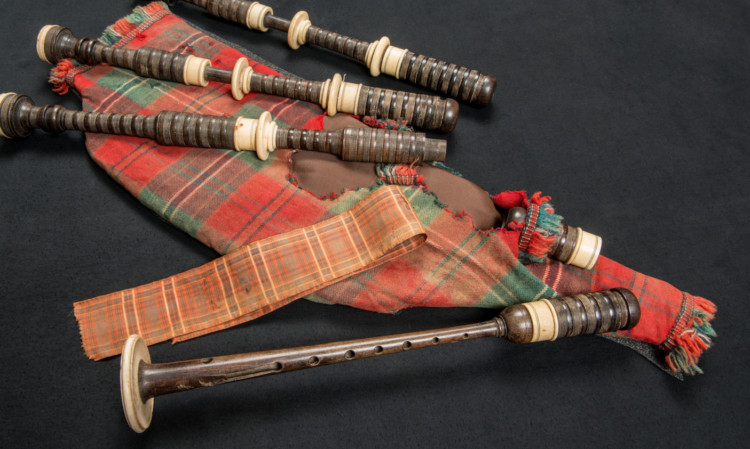A set of bagpipes plucked from the mud of the Western Front and kept in Perthshire for 90 years have returned to Scotland as part of a First World War exhibition.
The pipes were assumed to be Scottish when they were rescued at the Somme in 1916.
They were kept at Ardvreck School in Crieff from 1931 until researchers discovered they belonged to a soldier from a Canadian regiment, Piper James “Jimmy” Richardson.
In 2006 the pipes were sent to Victoria, where they are normally on display in the entrance hall of the British Columbia State Legislature.
Now, for the first time since they were sent across the Atlantic, the “most famous pipes in Canadian history” will return to Scotland on loan as part of an exhibition at the National Museum of Scotland.
Exhibition curator Dr Stuart Allan said: “The exhibition is about two things it’s about the transfer of Scottish military tradition to other countries and how significant the First World War is in their own national story.
“The Scottish tradition is so strong in the Canadian Army and the pipes epitomise that.
“These are important Canadian objects when you go into the Legislative Assembly, the seat of government and democracy in British Columbia, they are the first things you see. We wanted to convey the sense that these things are treasured in Canada.”
He added: “When people migrate their objects go with them. We were conscious that we had to bring stuff back, and it’s not a huge exhibition, so we wanted to get the absolutely best objects that we could possibly get.”
“We were trying to find nice footage from each of the countries,” he said.
“What we chose from Canada was a sequence of the 16th Canadian Scottish battalion leaving British Columbia to go overseas. The battalion marches past the camera led by the pipers.
“There are only five of them, so one of them is Richardson. I don’t know which one it is, you can’t see, but it was a moment of realisation these bagpipes are in that piece of film.”
The National Museum of Scotland exhibition, which takes place between July 11 and October 12, tells the stories of the Scottish diaspora and the war experiences of Commonwealth nations during the First World War.
It features items and footage from South Africa, Canada, New Zealand, Australia and London.
